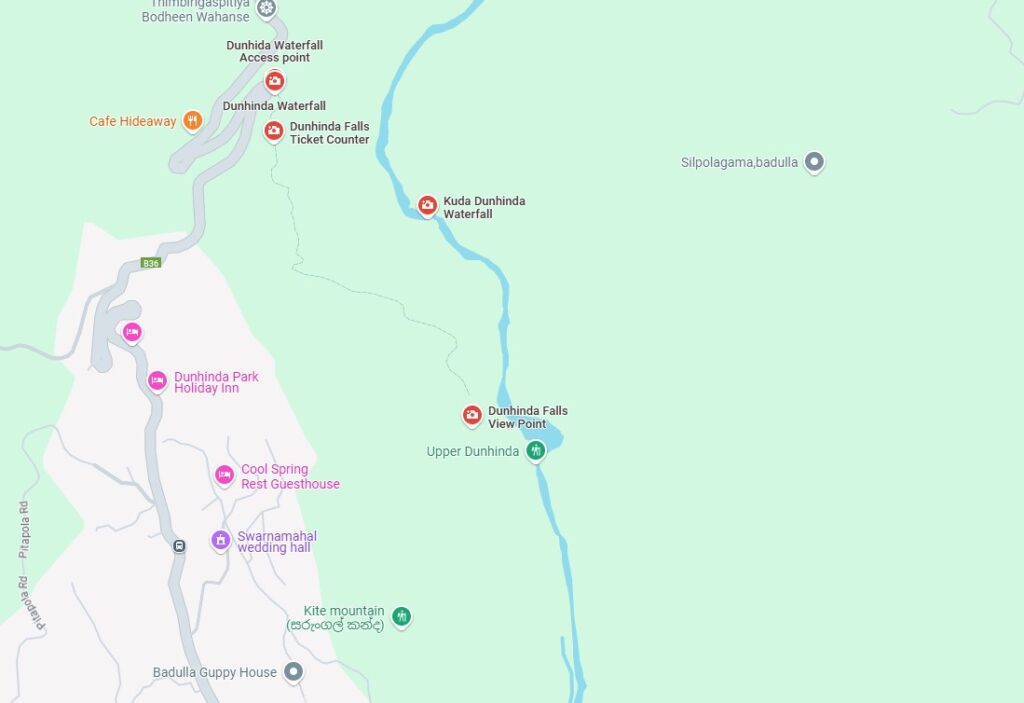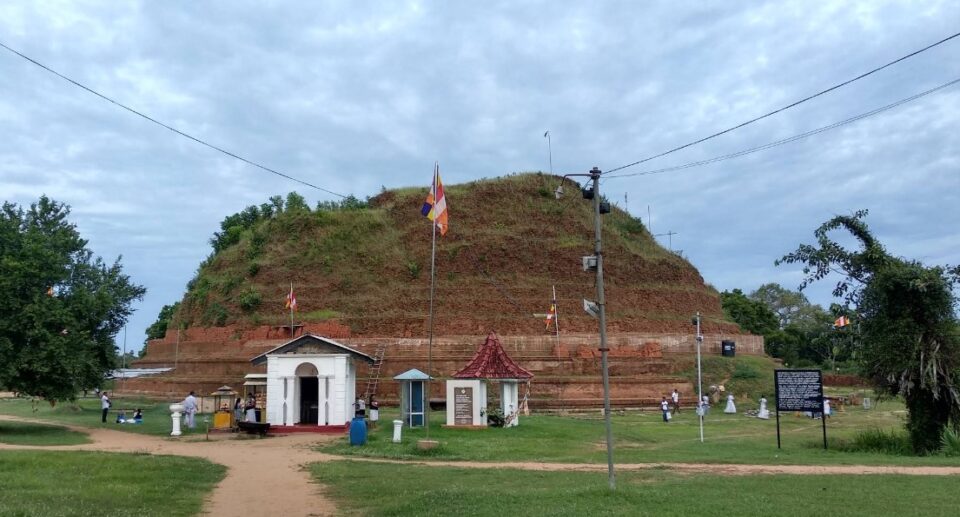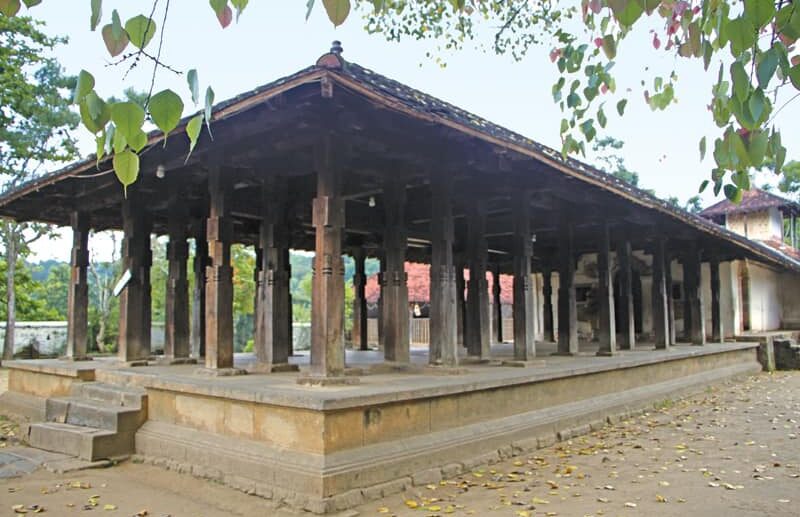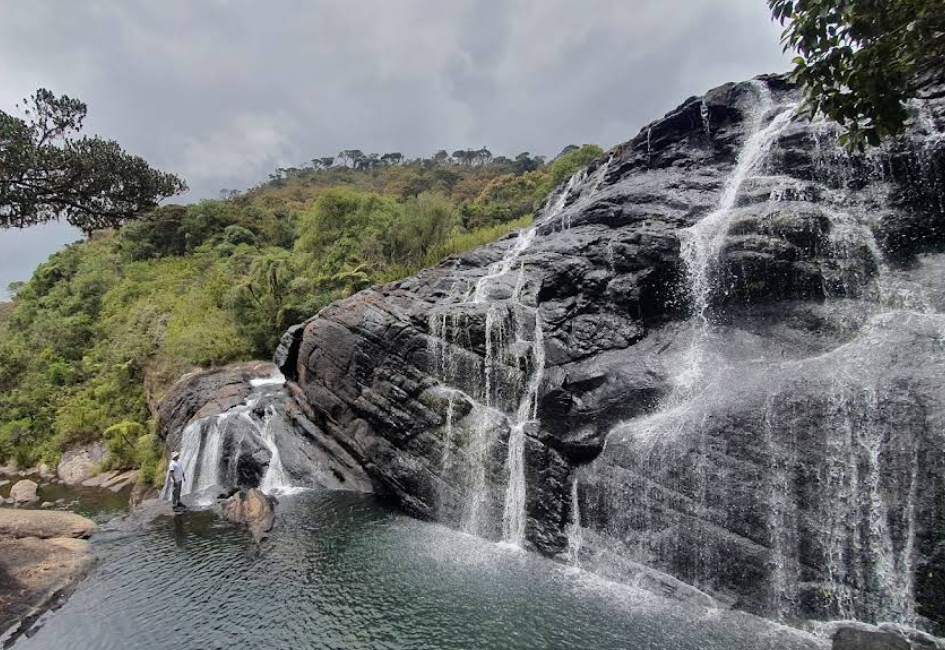Dunhinda Falls: Sri Lanka’s Bridal Veil of Nature
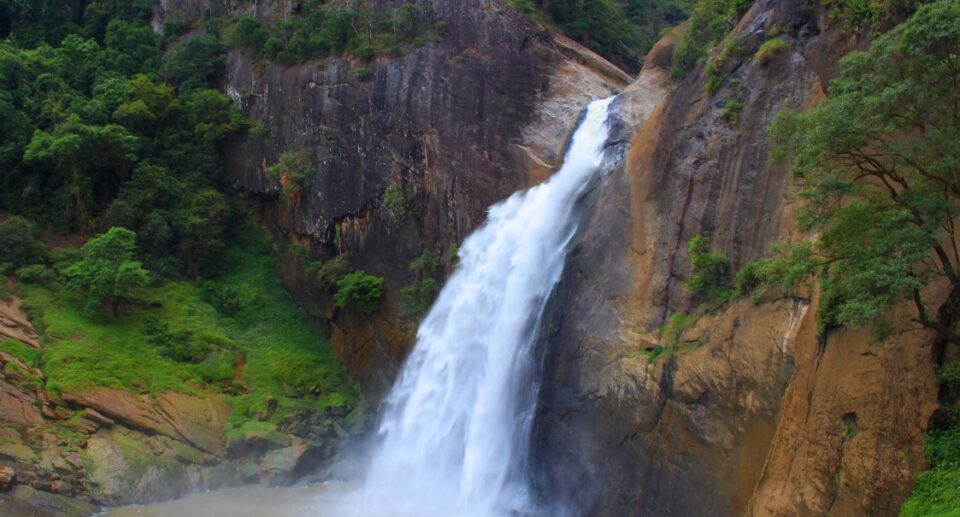
Secreted deep in the verdant hills of Uva Province, a short few kilometers from the Badulla town, lies one of Sri Lanka’s most breathtaking natural beauty Dunhinda Falls. With a cascading height of approximately 64 meters (210 feet), the waterfall is not only visually pleasing but also a beloved symbol of the country’s natural beauty. The word “Dunhinda” was derived from the Sinhala word “Dun-hinna,” meaning “spraying mist,” precisely the fine spray created as the waterfall drops to the rock pool at the bottom.
Though Dunhinda Falls has remained the imagination of the locals, poets, and visitors of ages, pulling in thousands of tourists annually who throng the site to witness its majestic flow and experience the serene atmosphere that engulfs it.
Location and Access
The Dunhinda Falls is located approximately 5 km north of Badulla, the administrative capital of Uva Province. The hike to the falls is a short trek along a well-maintained forest path some 1.5 kilometers off the highway. This stroll itself is part of the adventure, transporting one along dense undergrowth, small streams, and the occasional wildlife sighting. During the journey, one can relish the peaceful ambiance of nature sounds, chirping birds, and the sound of the waterfall growing louder in the distance with each step.
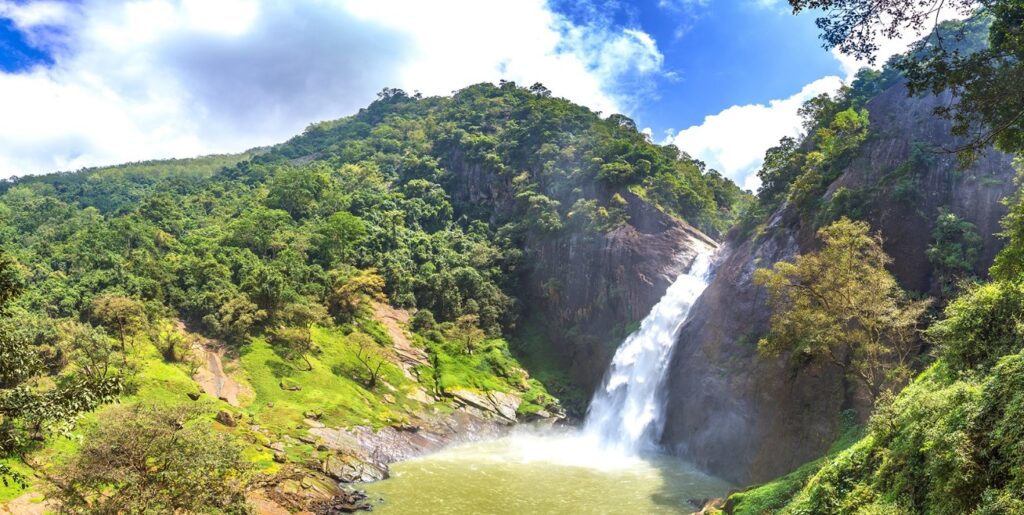
Although the walk itself is by no means hard, there are parts of it which are steep and narrow, and the rainier months must be tackled with some caution, in case the track is slippery. However, the trek to Dunhinda is considered by all to be worth the hassle, for the final view is nothing short of stunning.
The Waterfall and Its Natural Surroundings
The most sensational thing about Dunhinda Falls is its smooth, white spray of water falling off a cliff with steep rock walls on both sides and dense jungle. When the water falls into the deep rock pool below, it creates a whirling mist that rises like smoke, dubbing the waterfall and casting a spell over it. The base of the waterfall is surrounded by dark rocks and is off-limits to visitors due to the strong currents and safety concerns, but the overlook offers an unobscured, full view of the falls.
The origin of the Dunhida Falls is the Badulu Oya (Badulla River), which is conceived in the Badulla hills and winds its way through the highland terrain prior to forming the waterfall. The backdrop consists of the Uva Highlands, an area with rolling hills, tropical as well as montane forest, and cool climatic conditions. The region is marked by this unique environment that supports much biodiversity, like various bird, butterfly, and endemic flora species.
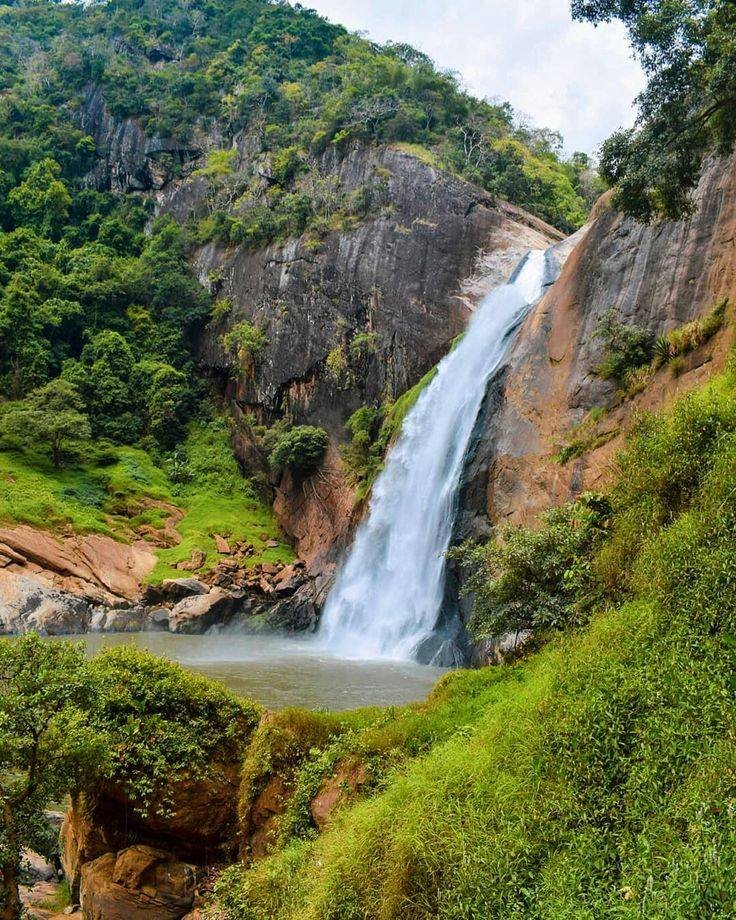
Besides its ecological significance, the environment of Dunhinda is a serene sanctuary for nature lovers, photographers, and adventure enthusiasts alike. The trail and scenic spots have bare minimum facilities in terms of benches and protection barriers but with an effort to preserve the natural habitat without excessive commercialization.
Historical and Cultural Significance
Dunhinda Falls is not just a natural wonder; it has a strong affinity in local mythology and history. One of the most popular myths states that the waterfall was formed through an ancient curse. The myth goes that there once was a gigantic sambar deer that was terrorizing the Badulla region, pulling crops out by the roots and scaring away villagers. The villagers requested the help of a local hunter, and the hunter finally succeeded in killing the creature by the river. When the deer crashed, its form blocked the river’s flow, water building up and breaking free in time to create the Dunhinda Falls.
Legendary or metaphorical, these stories reflect how natural sites become part of the cultural tradition of aboriginal populations. For centuries, Dunhinda has inspired visitors, artists, and writers who are mesmerized by its unspoiled beauty and regal bearing.
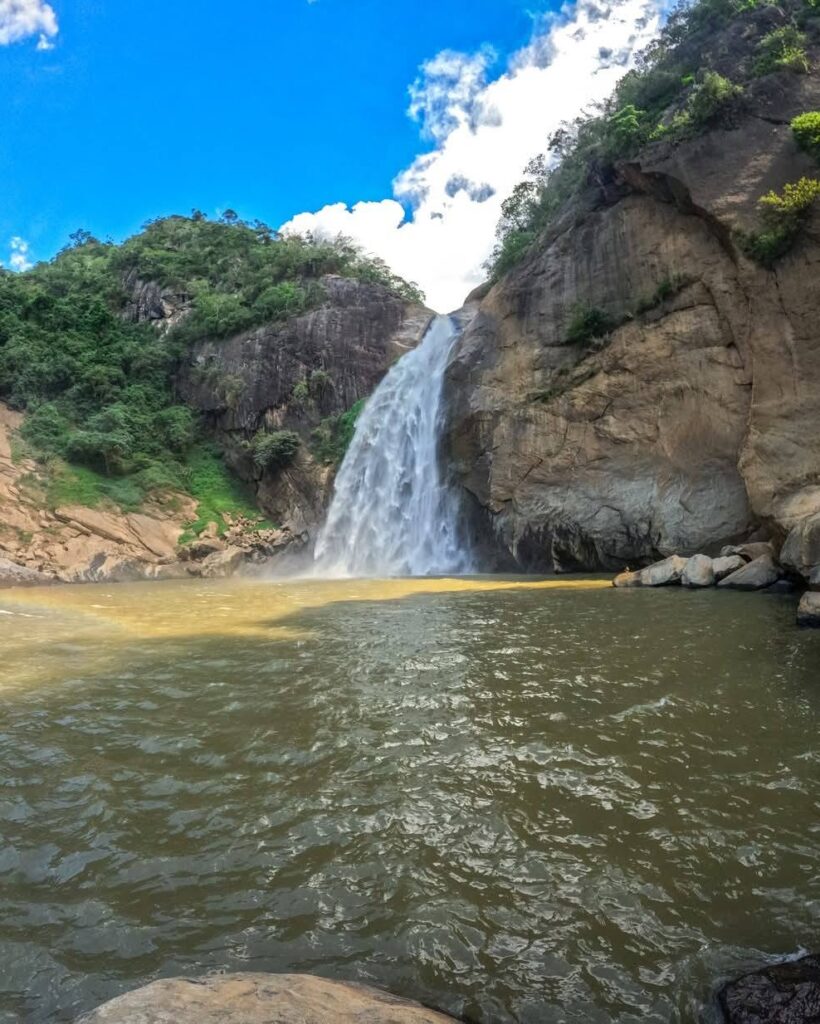
Tourism and Economic Importance
Dunhinda Falls is among the top tourist attractions in the Uva Province and contributes significantly to the local economy. The falls are typically part of tourist circuits for visitors who are visiting the hill country, particularly those visiting Ella, Bandarawela, and Badulla. Being close to Badulla, it is an easy day trip for locals and visitors alike.
The trail to the waterfall is lined with local vendor stalls, offering tea, herbal teas, woodcraft products, and souvenirs. These stalls are managed by the villagers around it, hence offering direct economic empowerment to the local areas.
Local authorities and conservation groups have also tried to promote sustainable tourism around Dunhida Falls. This includes maintaining the trail clean, disposing of rubbish appropriately, and educating tourists on how to maintain the ecosystem. Along the trail, warning signs remind people not to litter and to treat nature with care.
Seasonal Variation and Climate Impact
The Dunhinda Falls cascade is modified by the seasonal rains. The spectacle of the falls is at its best during May to September, the southwest monsoon period, when the Badulu Oya is brim-full with rainwater and the falls are at their strongest. Then the rumble of the water and the rising mist are especially dramatic and produce an almost tropical ambiance.
On the other hand, during the dry season, particularly from January to March, the water level can decrease significantly, though the waterfall remains a breathtaking view all year round. Climate change, deforestation, and changed rainfall patterns have begun to affect the flow and the surrounding environment of the waterfall, prompting calls for greater environmental protection and sustainable land management in the region.
Safety and Conservation Efforts
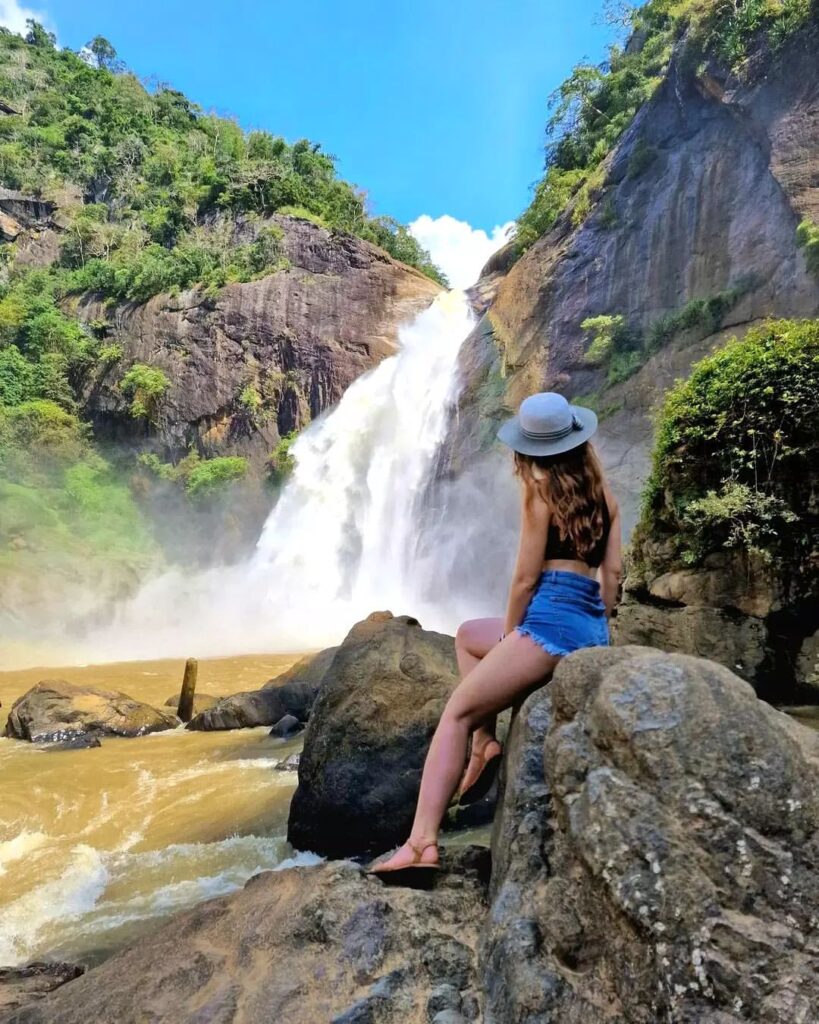
Due to its popularity, ensuring the tourists’ safety has become an issue. Although bathing at the bottom of the falls is prohibited due to strong currents and potential rockfall, tourists have in the past disobeyed warnings with some getting injured. To counteract this, fences and warning boards have been set up, and local forest guards patrol the grounds on a daily basis.
Conservation work is also promoted by local environmental NGOs and the Sri Lankan Forest Department. These vary from tree planting to soil erosion management, and conservation awareness campaigns targeted at maintaining the pristine nature of the site for future generations.
The Dunhinda Falls is not only a beautiful waterfall. it is a cultural icon, an ecological marvel, and an indispensable part of Sri Lanka’s natural and touristic legacy. With its thunderous drop, ethereal fog, and lush setting, the waterfall offers a profound experience to anyone who experiences it. It serves to remind us of the nation’s rich natural treasures and the imperative to save such wonders from contemporary development and environmental degradation.
Whether you are a budget traveler, adventure tourist, or a soul traveler who visits to rejuvenate amidst nature, Dunhida Falls is one of the most magical destinations in Sri Lanka’s hill region. With judicious care and eco-conscious practices, this Badulla misty treasure will forever remain awe-inspiring and wonderful in years to come.
Dunhinda Falls is a waterfall located about 5 kilometres from Badulla in the lower central hills of Sri Lanka. The waterfall, which is 64 metres high.
Map of Dunhinda Falls
